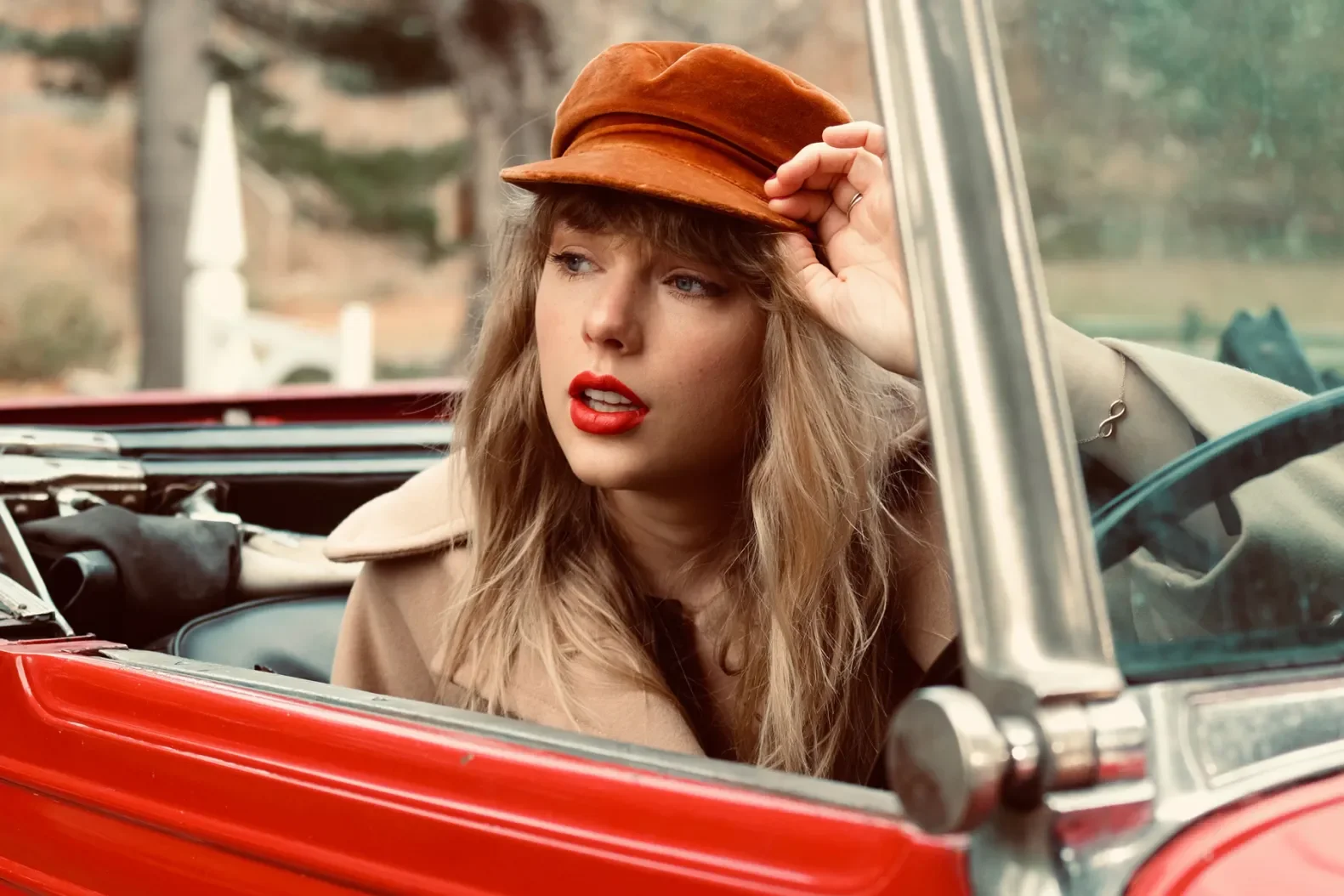“Taylor knows how to make something feel eternal.” — Jack Antonoff
There are days when I think I came to America because of Red.
That album made me want to see this country — really see it — the way she saw it. I’d been to Miami and New York before, but those were postcards. Red made me want to travel through the heart of America — and eventually make it my home. To belong to the place where the autumn leaves fall “like pieces into place.”
I. Taylor’s America
Taylor Swift’s music is a living map of American mythmaking. Across Red, 1989, Folklore and The Life of a Showgirl, she charts the psychic geography of small-town and suburban life — plaid shirts, car rides, high school bleachers and dancing ’round the kitchen in the refrigerator light.
Her America isn’t just a backdrop; it’s a character in its own right — a muse for her storytelling. When she sings of Ferris wheels, kisses and lilacs, she isn’t just recalling a romance; she’s resurrecting a national mood. Her songs transform ordinary places into emotional landmarks, imbuing them with longing, memory and the ache of almost. Each domestic image becomes sacred Americana — ordinary yet mythic, intimate yet universal.
II. The Haunting of Memory
What makes her writing so piercing is the compression — how nostalgia and regret coexist inside just a few words. “Ferris wheels, kisses, and lilacs” feels like a Super 8 reel discovered in an attic: flickering, fragile, too beautiful to be real.
When she repeats beautiful, it isn’t vanity — it’s preservation, as if she’s trying to hold on to something already dissolving. And when she sings, “Things I said were dumb / ’Cause I thought I’d never find that beautiful, beautiful life,” you feel the ache of hindsight — that quiet regret of not realizing you were in the good days until they were gone.
Her melodies mirror that ache: minor sevenths, suspended chords, phrases that reach for resolution and never quite find it. It’s the sound of yearning made harmonic — her unique brand of narcotic melancholy.
III. Suburban Mythology
Few artists have transformed suburbia into such potent mythology — or blurred its edges so tenderly with small-town memory. The “basketball hoop in the front yard” is her shorthand for the dream of belonging.
She turns the ordinary into sacred Americana: a backseat becomes a chapel of first love, a cul-de-sac becomes a cradle of destiny. Her nostalgia isn’t regressive; it’s radical. She insists that small, tender memories matter — that emotional truth can be epic. “This is the golden age of something good and right and real” — even when it happens on a Wednesday in a café.
You can hear this mythmaking instinct even in her deep cuts. Ruin the Friendship plays like a Polaroid of adolescent longing — its imagery so vivid you can smell the September rain:
Glistening grass from September rain
Grey overpass full of neon names
Gallatin Road and the lakeside beach
Watching the game from your brother’s Jeep
Every detail — the grass, the overpass, the Jeep — feels local, even holy. This is Swift’s secret language: small-town memories elevated into something cinematic, places you’ve never been but somehow recognize. It’s not nostalgia for a real America — it’s nostalgia for the idea of one.
IV. Red and the American Autumn
For me, Red is still the defining work — the one that changed how I saw this country and, in a way, myself.
When she wrote, “autumn leaves falling down like pieces into place,” she wasn’t just describing a season. She was inventing an emotional geography. Her America — beautiful, vanishing and full of promise — became the dream I chased when I finally moved here.
In her songs, the country itself feels like a character: the backroads and streetlights, the small towns and city corners, the fading glow of headlights on a long drive home. Each image feels lived-in, half-remembered — eternal for a moment, then gone.
Even for those of us who weren’t born here, her imagery feels like home. Through her words, we inherit a memory that might never have been ours — the sense of getting lost upstate, both literally and spiritually, and finding ourselves somewhere in that golden in-between.
V. Bigger Than the Whole Sky
Some songs you understand instantly. Others you feel in your bones before you can name them. “Bigger Than the Whole Sky” belongs to the latter.
It’s grief suspended in air — the ache of something unfinished. Jack Antonoff’s production is at its most delicate here: synths that shimmer but never settle, a melody that climbs and falls like a sob caught mid-breath. You can hear her inhale between lines — that fragile hum of someone holding back tears.
“Did some bird flap its wings over in Asia? / Did some force take you because I didn’t pray?”
It’s not just about loss — it’s about a life that never had the chance to begin. The story that ended before the first line was written. “What could’ve been, would’ve been, what should’ve been you” — that refrain hits like a ghost of possibility.
There’s a strange serenity in it, too — the way she gives shape to the unspeakable. No melodrama, just the quiet devastation of love’s echo.
That’s what she does better than anyone: she makes sorrow sound sacred.
VI. Eldest Daughter
“Eldest Daughter” feels like the sequel to all of this — a song that carries the weight of memory, responsibility and sadness all at once. It’s the sound of someone who has spent her life documenting the world’s emotions and is now looking back, tenderly, at her own.
We lie back
A beautiful, beautiful time lapse
Ferris wheels, kisses and lilacs
And things I said were dumb
'Cause I thought that I'd never find that beautiful, beautiful life that
Shimmers that innocent light back
Like when we were young— Eldest Daughter (2025)
Taylor’s genius lies in that shimmer — the light of innocence refracted through experience. The girl at prom, the woman at the piano, the mythic songwriter — they all exist in the same frame.
So yes, Taylor — have fun, it’s prom. You’ve already written the anthem for everyone who ever longed for a person — or a place — to call home.



















